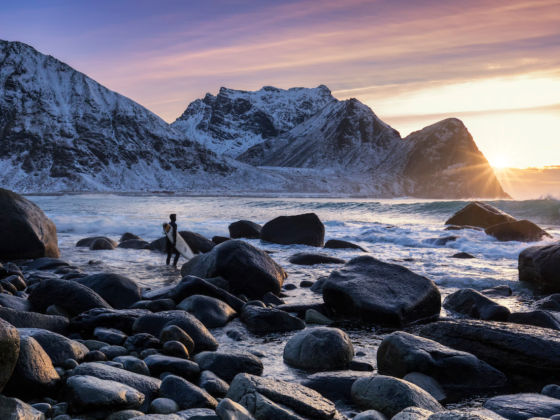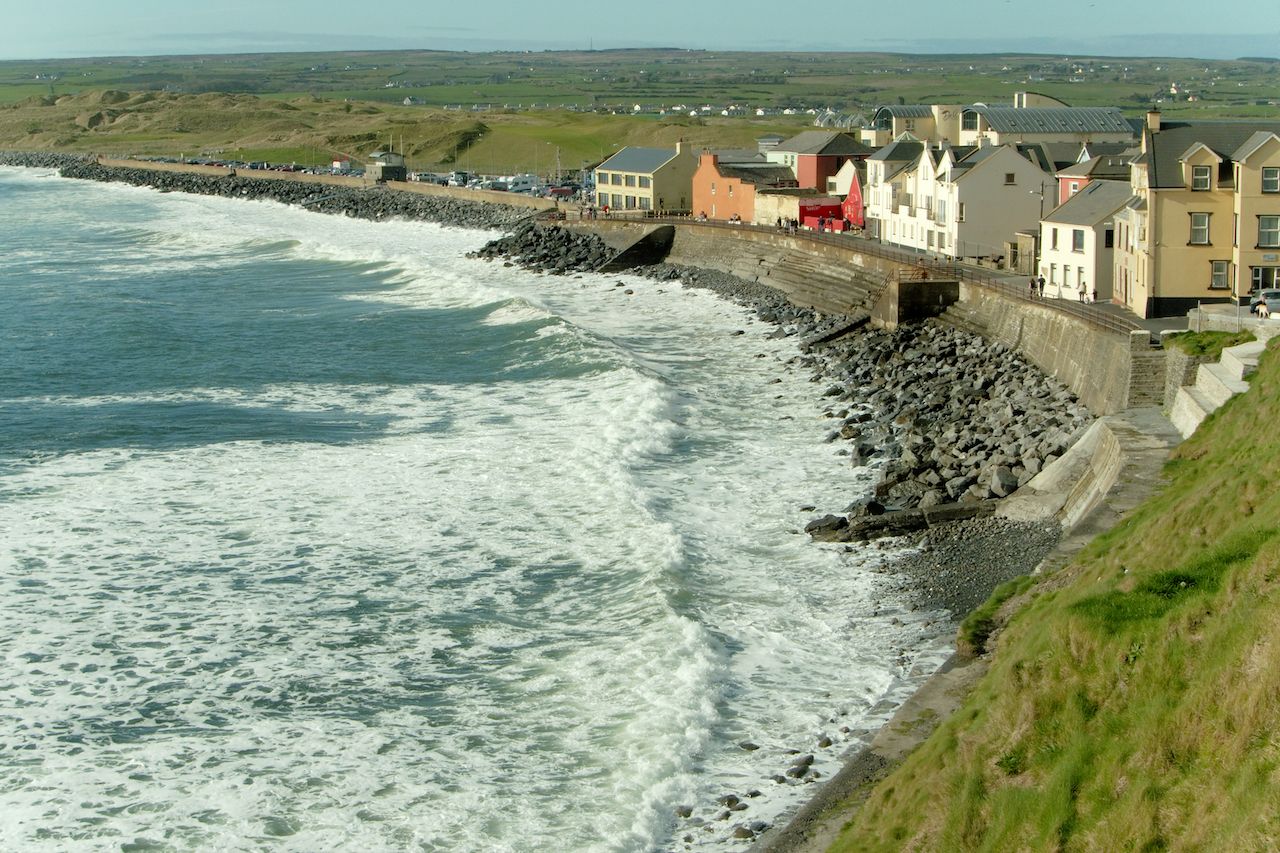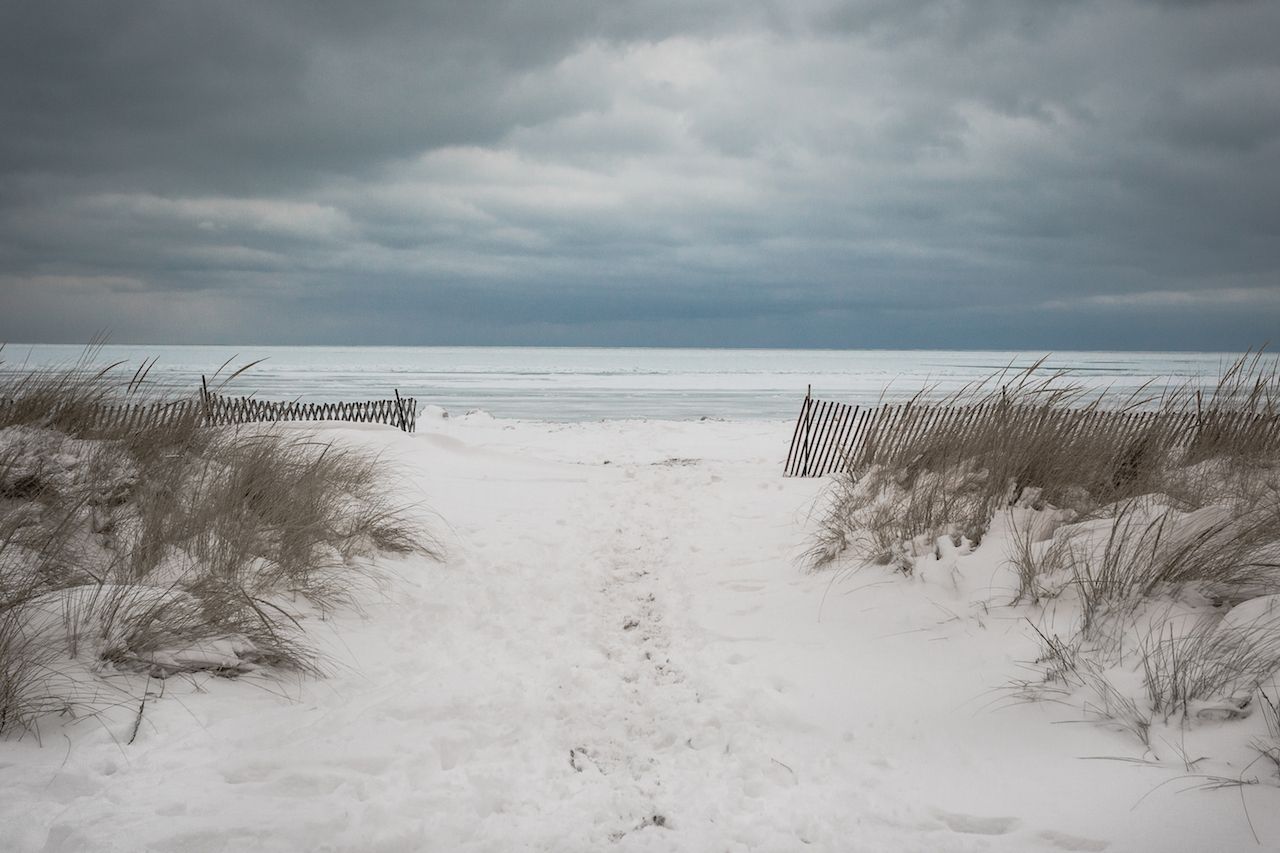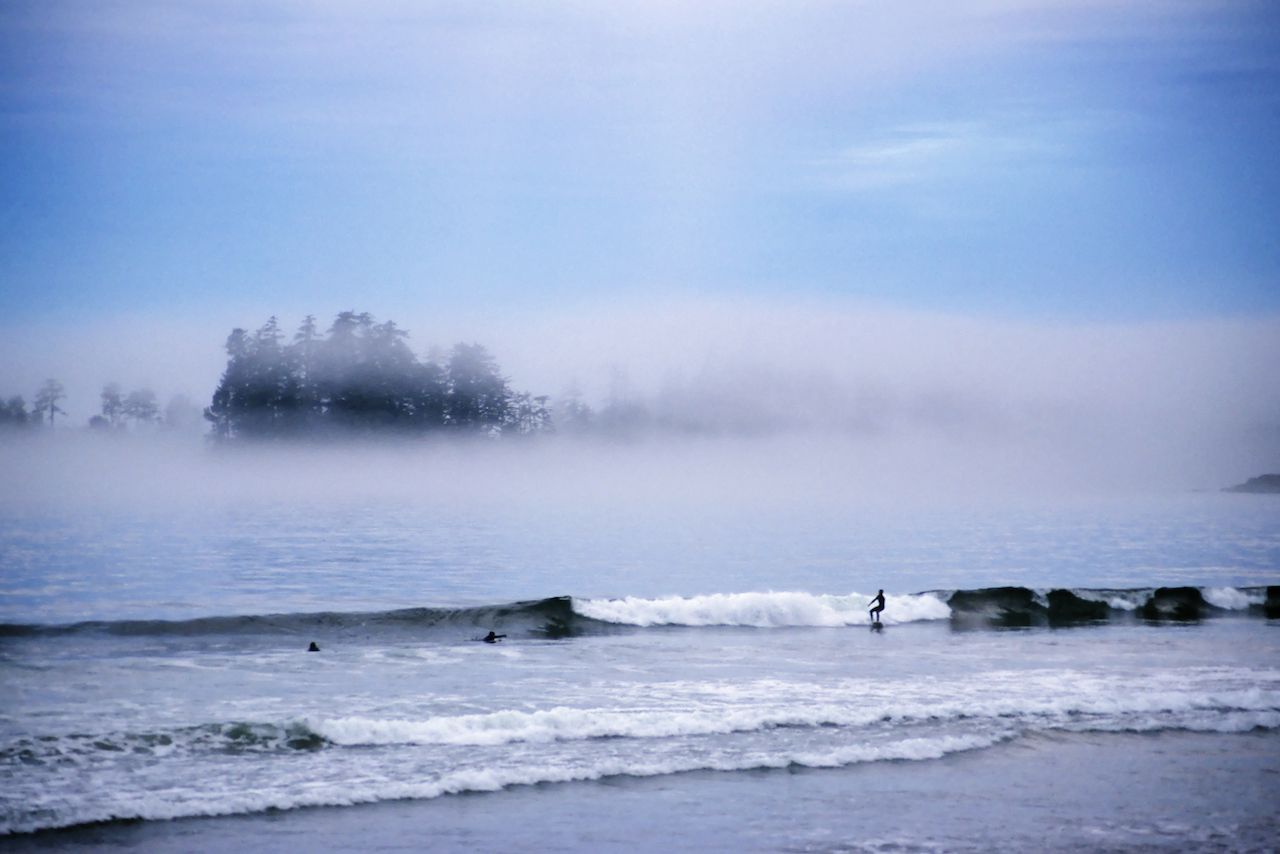There’s nothing like surfing in cold water. Those surfers with the inclination to seek it out are often rewarded with empty lineups and a feeling that you can’t quite replicate in the comfort of warm, tropical waters. Imagine being in the sea with only one other surfer on a winter’s day, encased head to toe in thick neoprene. Now you’re sliding down the frigid face of a wave, the sound of it breaking muffled by your wetsuit hood, a sharp wind in your face as you trim across a chilly wall. There’s no one watching, but it doesn’t matter. The extra effort to overcome the elements makes the reward worth that much more.
It’s not for everyone, but the same motivation that has always driven surfers to leave their home breaks and look for new waves is what makes some surfers gravitate towards the raw beauty and isolation of cold places. If that sounds good to you, here are a few places to start your cold water surfing adventure.






